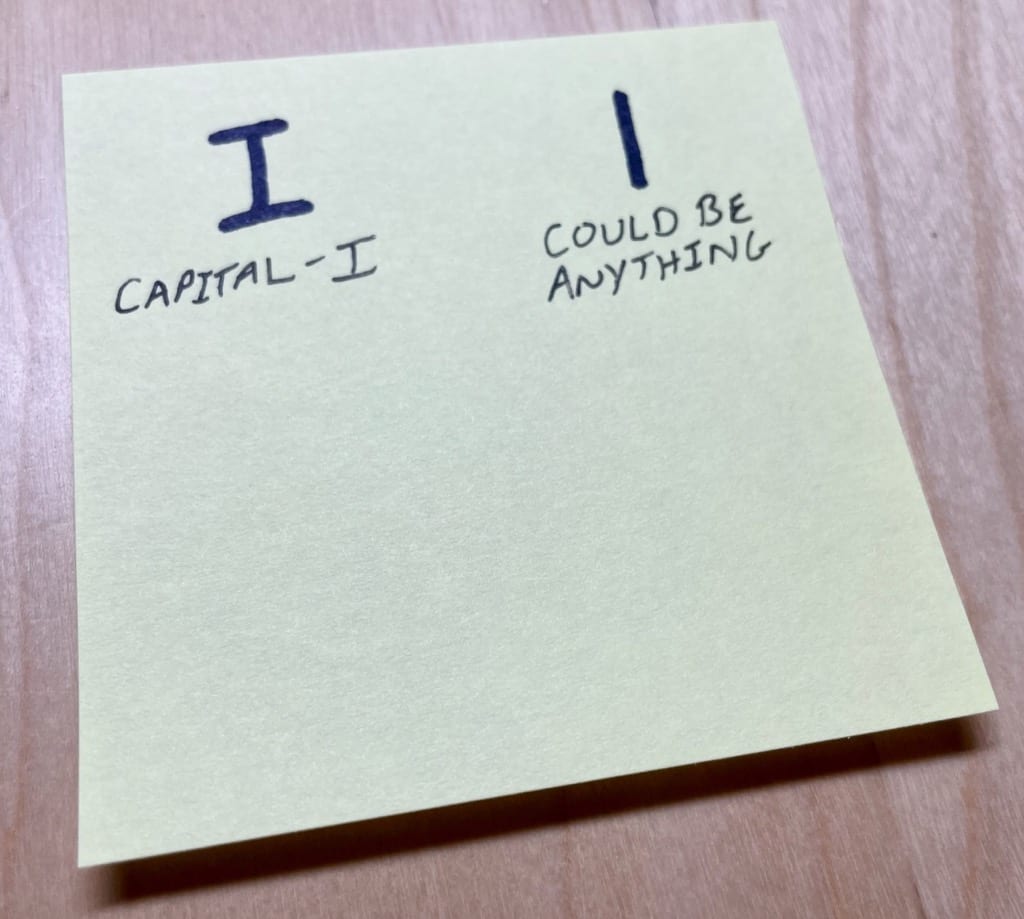Wavelength Messenger
This is not a review, but I wanted to jot down some notes after a few days in a new app that I’m enjoying very much: Wavelength Messenger. You might like to read John Gruber’s post for details.
My wife believes that I have some kind of processing disorder that causes me to quickly become overwhelmed by too much simultaneous input. She discovered this after several visits to the local Costco. After a few minutes in a busy Costco, I sort of shut down and become surly. I can only think about leaving. I’m no fun in a Costco.
This disorder is probably why I dislike Discord. A few minutes in a busy Discord server and my eyes sort of glaze over the same way they do in a Costco. I can’t wait to get out of there.
I prefer old-fashioned web forums. Forums are calm. Even busy ones. People can gather around a topic, post threads, and then discuss them, in context, at their leisure. I can find a topic, then easily scan the whole conversation. Discourse does a great job of this. Discord recently added forum-like features, but they feel tacked on and not that different from the main areas.
When I’m visiting a product’s website and see a link to “Community”, I cross my fingers, hoping that the link leads to a Discourse forum and not a Discord server.
Forums, however, can feel a little distant. Impersonal. It’s a challenge to find a good balance between real-time chat and more leisurely forums.
What about Slack? I’ve used Slack since the beginning. Loved it. But it feels heavy. The macOS “app” still uses too much juice and the web app feels janky. Switching between Slack workspaces is cumbersome and it makes me feel too far away from the workspaces I’m not currently in. Slack channels aren’t lightweight enough to use as threads, and Slack’s threads still feel like the place conversations go to die.
Wavelength balances all this nicely. I can see every group I’m in, and which ones have new activity. I can quickly pop in and join the conversation threads I’m interested in. Creating a new thread doesn’t feel like a big deal the way it does in forums. Although so far in a few groups everyone is just using one long thread, so we’ll see how that plays out.
The AI integration feels trendy, but I’ve been surprised at how often I’ve used it. It’s handy having AI right there in my messaging app.
The big thing missing for me is the ability to search messages. I understand that end-to-end encryption creates challenges around searching, but if they can manage to magically move thread history from peer to peer, I bet they can manage search. We’re going to need it.
Wavelength is a good-looking, good-feeling app that is good at group discussions. I like it.
My read-later service is made of paper
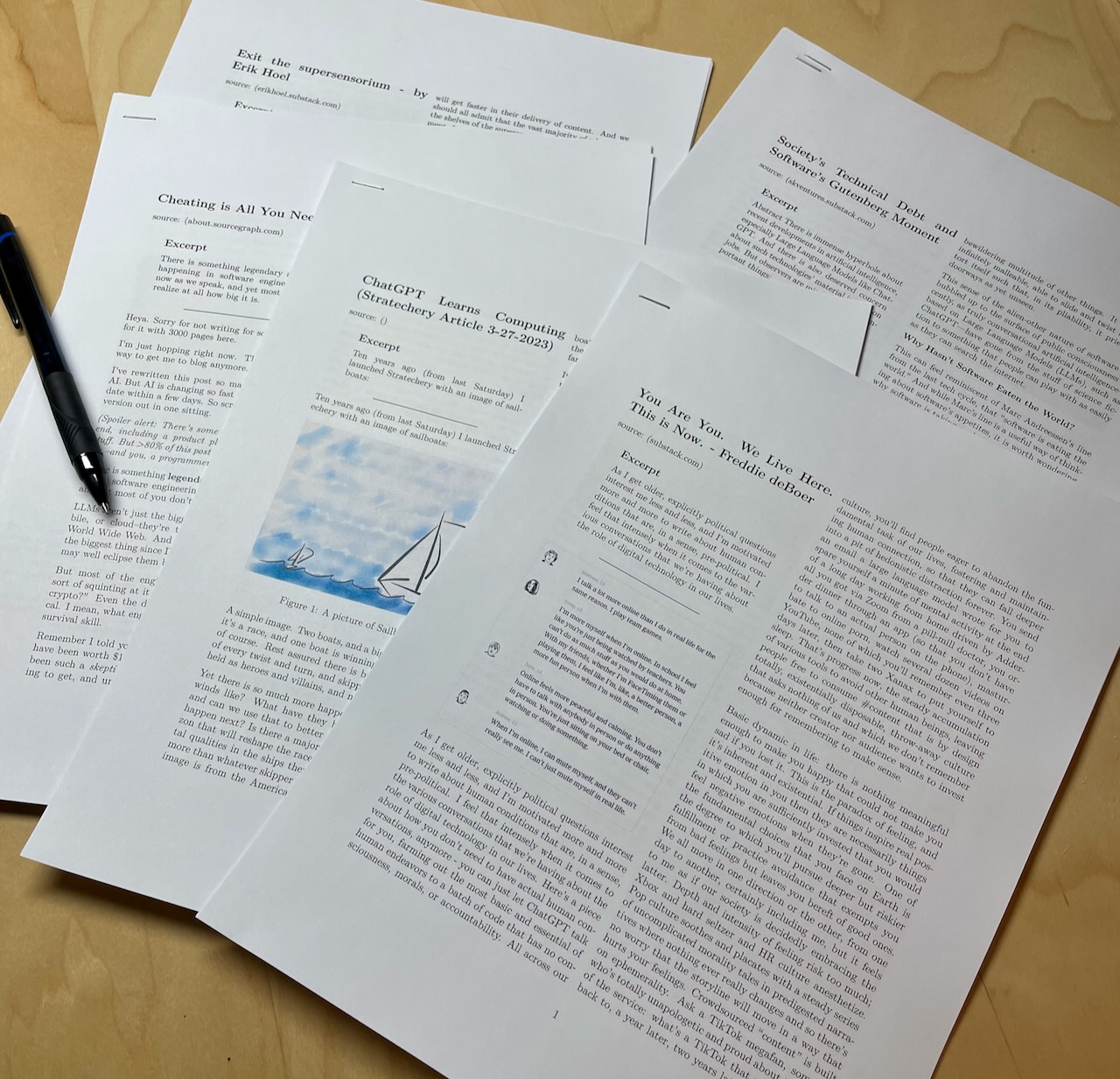 My read-later backlog
My read-later backlog
I’ve tried so many “read-later” services that I can’t remember half of them. They’re all basically the same: visit a website, click a button, and the article is saved to a list somewhere with all the other articles I’ve saved. Some newer services get fancy with recommendations, UI improvements, social integration, etc. but they all just gather a list of articles that I almost never end up reading. But, you know, just in case, right?
I started printing long-form articles that I wanted to read in 2020 and that continues today. It’s the first read-later service that has stuck with me. My process for printing articles works great. I love the concise, two-column format I get from my Pandoc template. The Pandoc->LaTeX->PDF typesetting is so good and makes long-form text super easy to read. That, along with double-sided printing keeps the page count nice and low (it’s less annoying for the forests).
The printed articles are stapled and stacked on my reading desk. When I feel like digging through them, I sit down, grab a pen and highlighter, and slowly and calmly read stuff. It’s low-tech, offline, and comes with zero distractions. The minor friction around collecting articles keeps me from dumping everything into the pile. I only keep what I actually want to read, instead of everything I might maybe (but probably not) get to someday.
It’s a good system.
DHH: Why is paid social media a bad idea?
I don’t think everything ANYONE does is great. Not my good friends, not my coworkers, NOT MYSELF. This preemptive distancing from controversial figures when they do something you actually agree with is just so performative and pathetic.
DHH: (world.hey.com)
Finally, I’m with DHH on something. Don’t feel like you need to distance yourself every time you reference a person or work that someone on Twitter told you is bad.
As for the rest of his post, I dunno, but watching what Musk does with (to?) Twitter is fascinating at the very least.
Nick Brandt on using a digital camera — I hated it
I brought a Hasselblad 60 megapixel medium format digital camera to Africa with me. I took photos side by side with my film camera. The digital camera’s images were sharper. They had more detail in both the shadows and the highlights. The digital camera made photographing very, very easy.
And I hated it. … In fact, had I photographed using a digital camera from the beginning, I’m not sure that I would have liked a single photograph that I had ever taken.
Nick Brandt, I am the Walrus
His animal photographs are astonishing. And he uses short (50-100mm equiv. on 35mm film) lenses on film cameras. Amazing.
 NICK BRANDT. LION BEFORE STORM SITTING PROFILE, MASAI MARA 2006
NICK BRANDT. LION BEFORE STORM SITTING PROFILE, MASAI MARA 2006
Leitz Elmar 9cm f4.0
This Leitz Elmar 9cm f4.0 is by far the worst lens I own.
 Leica SL2 with Leitz Elmar 9cm
Leica SL2 with Leitz Elmar 9cm
And yet, I’m drawn to it for that very reason. I’m feeling a pull toward low-fi digital. Or at least imperfect digital. I’m not tempted to go buy a 2003 digicam like the kids are doing, but I’m also not drawn toward the APO-Summicron-SL that I used to shoot with.
This Elmar is quite soft and has such low contrast that it seems like there’s something wrong with it. As an example, here’s a mirror self-portrait straight out of camera:
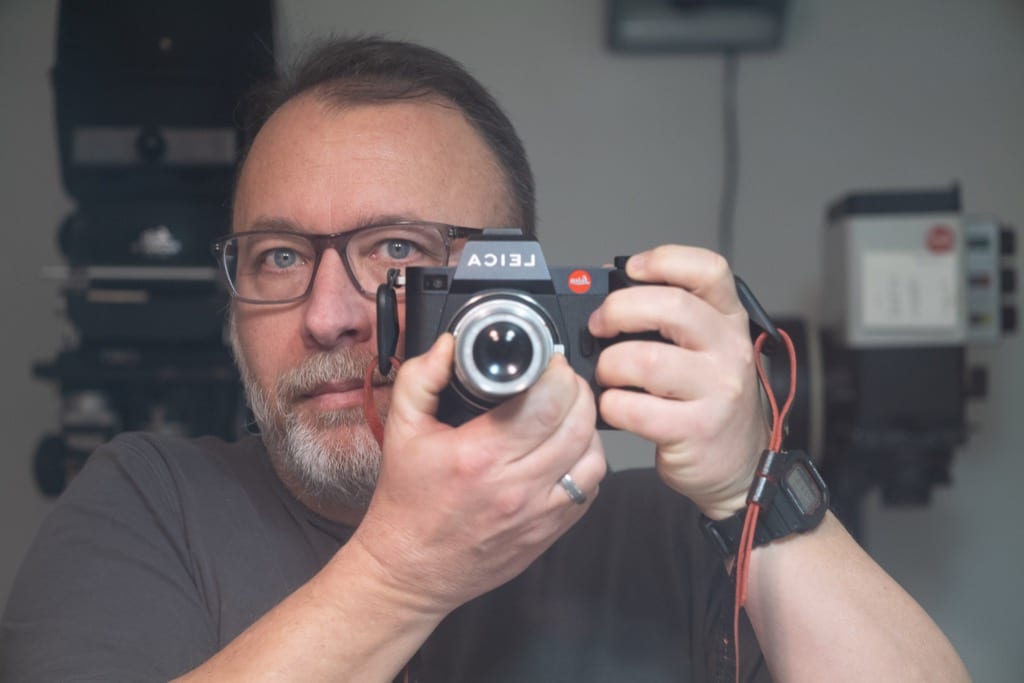 Self-portrait using the Elmar 9cm
Self-portrait using the Elmar 9cm
Awful, right? Gloriously, satisfyingly awful!
This lens has been sitting on a shelf for years because I didn’t see the point, when so many better lenses are readily available. But now I’m thinking that maybe I’ll find a few “shitty” lenses to shoot with and see how it goes.
It’s time to get back to work
After a two-year sabbatical, I’m ready to head back to work.
I wrote a few notes about how that might look: Hire Me.
Roll-104 (Leica M3/HP5)
It’s always surprising to me how many frames I don’t screw up when using the meterless M3.
 Arrows on road
Arrows on road
 Alice
Alice
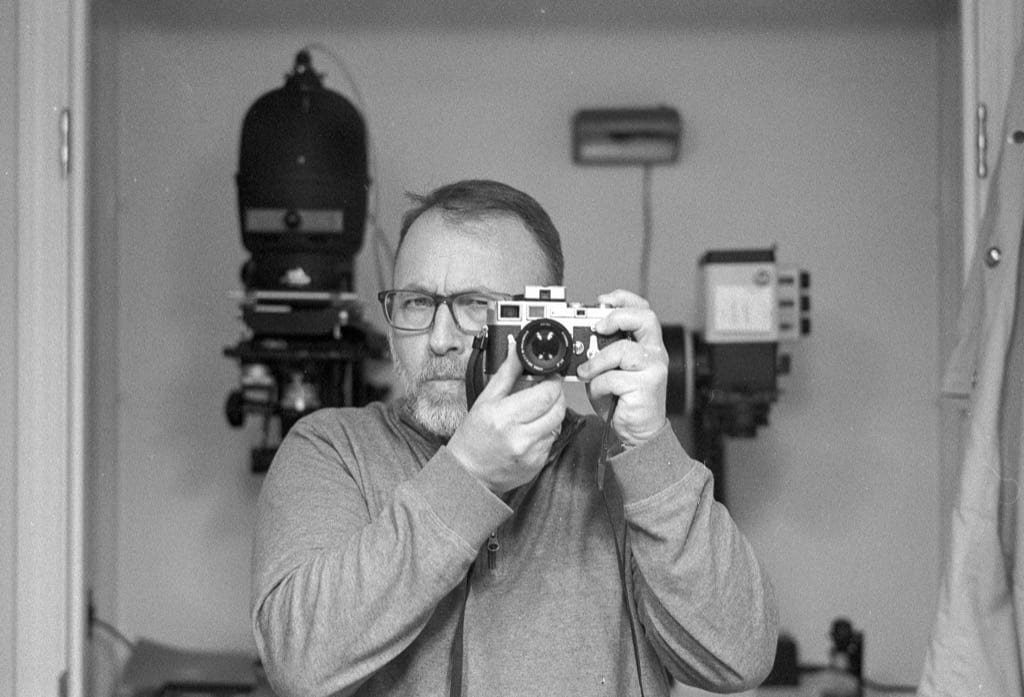 Self-portrait in mirror
Self-portrait in mirror
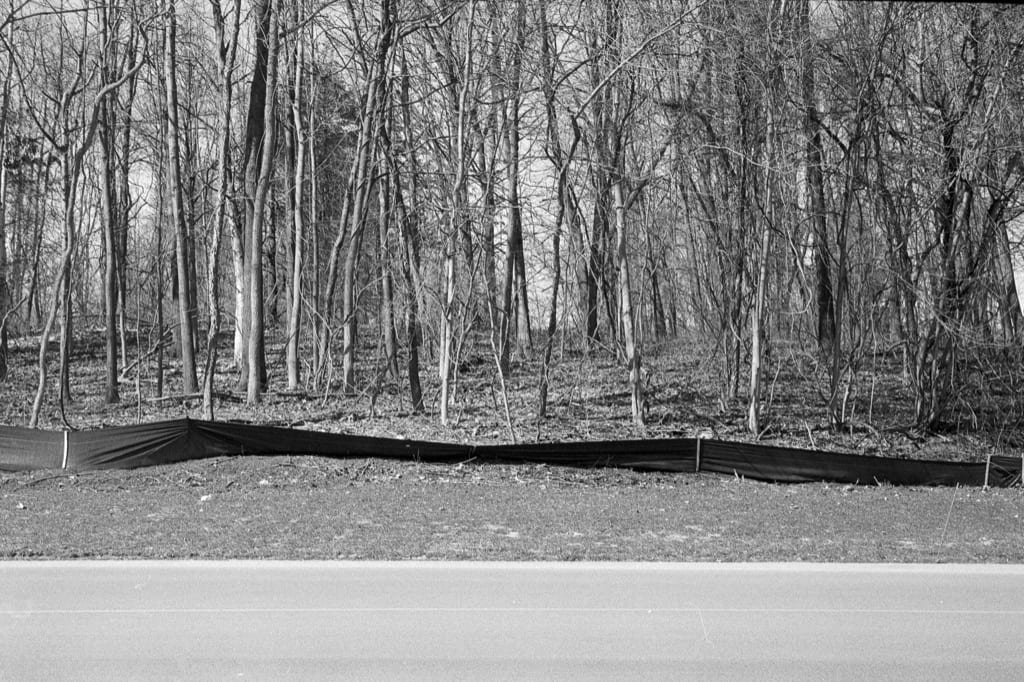 Fence and road
Fence and road
 Garage and Founders Brewing
Garage and Founders Brewing
More like everyone else
I’m wondering if I should become more like everyone else. Should I post “5 Tips to improve your workflow right now!” articles on Medium? Should I be “super excited” to humblebrag about myself on LinkedIn? Should I fire up my Instagram account and splash gaudy “stories” all over it throughout the day? Should I buy some neon background lights and work on an unnecessary 90-second musical intro to my upstart YouTube channel?
No, I shouldn’t.
Back to Org-roam (from Denote)
Using both Org-roam and Denote for my notes is not sustainable. I had to make a call one way or the other.
I went with Org-roam.
This is a bit disappointing because I prefer the philosophy of Denote. I like that Denote is agnostic about file types (I can mix and match Markdown and Org-mode files, for example). I like that it forces a consistent file naming scheme. I like that it doesn’t depend on Org-mode features or any other complex dependencies. I like that it doesn’t try to do too much, but is easily extensible. Plus, I’m not trying to build some sort of zettelkasten or anything, so simple is preferable.
But, I keep finding things in Org-roam that I “need”. I use aliases all the time. I like to use several tags on a file, but don’t want them all in the file name. I like the full-featured daily notes functions. I like the ability to extract a heading out to a new roam file. Or I can use org-roam-refile to move a heading to another file in the Org-roam directory. I’m sure I could find ways to handle some of these things in Denote, but with Org-roam I get them out of the box.
What I really like in Org-roam, and have come to rely on, is the ability to have individual Org headings become their own independent roam nodes. For a while, I thought this added unnecessary complexity, but it turns out to be super useful. For example, I have a books.org file, with each book as its own heading. (See Book logging in Emacs). Since moving this file into Org-roam, I’ve turned each book’s heading into its own node, making it easier to search for a book or to link between the book and its author note or a concept note. And I can still create summary tables within the books.org file.
Then there’s the Graph. I make fun of the Graph because it really is mostly useless, but dammit it’s fun to poke around in.
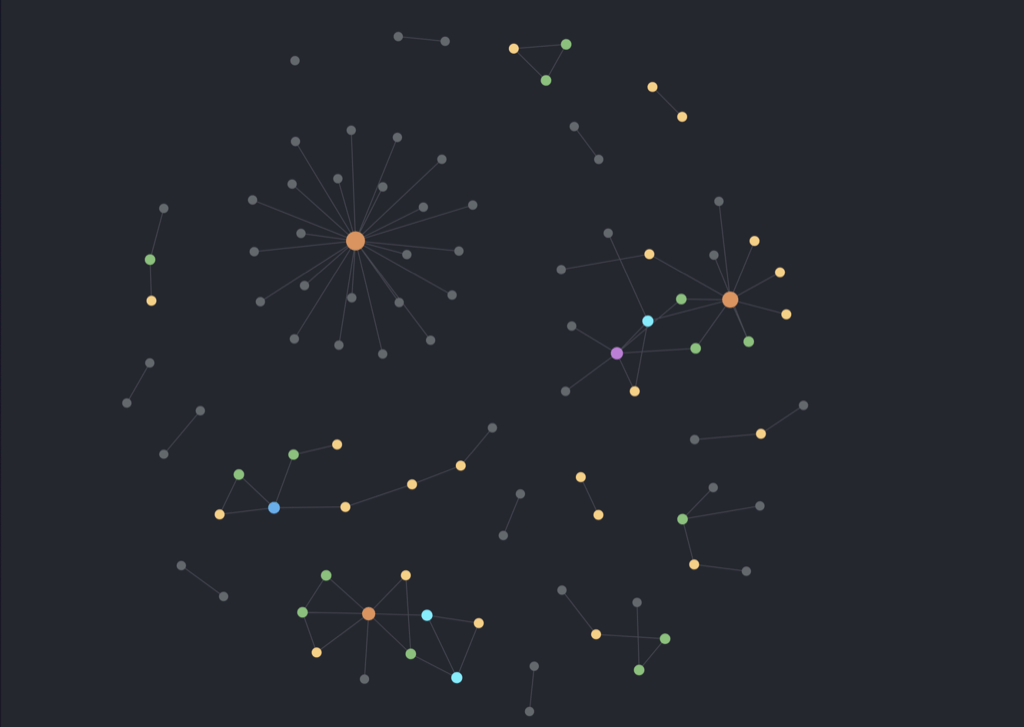 Part of my org-roam graph
Part of my org-roam graph
Add Org-roam’s larger ecosystem to the above list, and the decision to keep my notes in Org-roam becomes hard to argue with. I’m slowly moving my Denote notes back into Org-roam and fixing links, etc.
I don’t know why I’m so sentimental about Denote. Not using it makes me a little sad. Prot is brilliant and I like the way he thinks. Denote is a terrific, smart, simple Emacs package, but right now Org-roam makes more sense for my notes.
